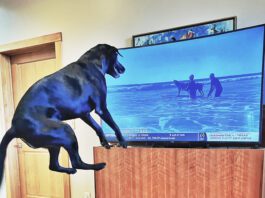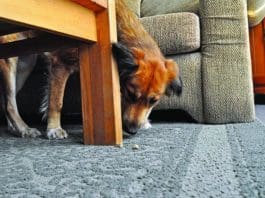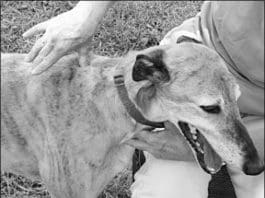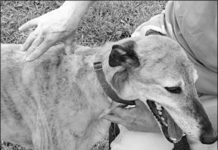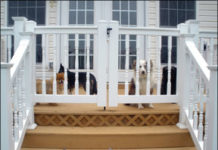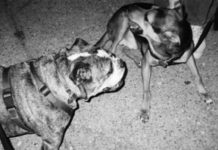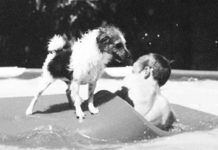Understanding Canine Dysfunctional Behavior
Does your dog exhibit autism-like behavior? I have had several clients ask me if their dog could have autism and whether this could explain...
Help for the Home-Alone Dog
As soon as the kids went back to school and Carly was left home alone during the day, things in and around the Hoye’s house began to get chewed. Initially, they thought it was just puppy teething, and to save the rugs and furniture (not to mention the hardwood floors and woodwork around the doors and windows in their restored Victorian) the Hoyes started leaving Carly outside during the day. But she soon advanced to chewing the lattice off the sides of the deck and the shingles off the sides of the house.
Treating Canine Compulsive Disorders With Acupressure Techniques
Does a worried dog sing a worried song? A dog's worried song" is often expressed in quirky
Why Do Dogs Suck on Blankets?
We’ve all seen human babies sucking on pacifiers, their thumbs, or even on blankets and child experts tell us that this kind of instinctive sucking calms babies and makes them feel more secure. The same is likely true for dogs who can suffer from anxiety and stress.
How to Comfort a Dog in Heat
An intact dog will go through a heat cycle twice a year. Comforting a dog in heat requires patience and keeping a dog that is confined indoors engaged.
Door Darting Management
or securely enclose your porch or deck."
Puppy Training Classes Teach Self Control
When Hera was about 18 months, we went to an adult dog training class. This instructor told us to use a prong collar. We bought one but often we forgot" to bring it to class. We walked her with it a couple of times but just couldn't get ourselves comfortable with the tool even after we'd followed the instructor's directions to put it around our own thighs and jerk so we'd know it didn't hurt terribly much."
How to Catch a Dog on the Loose
but most will send an officer right away if the dog is contained."
Training Your Dog to Behave Around Guests
Whether you have a pup with normal puppy energy or an obstreperous teenager who has good manners lessons to catch up on, clicker training can be a magically effective and gentle way to convince a dog to calm down. No yelling, no physical punishment; just clicks and treats for any pause in the action. That said, the biggest challenge with a hyper" dog is that any praise or reward may cause her to begin bouncing off the walls again. It is nearly impossible to deliver a treat to an excitable dog while she is still in the act of being calm. By the time you get the treat to her mouth she is once again doing her Tasmanian devil act."
Put A Stop to Door-Darting Dogs
Door darting is an impulse-control problem. It's also incredibly self-rewarding. Remedying the issue requires teaching the dog to exhibit self-control around an open door, while employing diligent management to prevent the rehearsal of unwanted behavior. The following tips can help.
Swim Party?
Whether inviting a swim-crazy dog into the pool is a good idea (and how to keep him out of the pool when it’s NOT).
Why Do Dogs Dig?
Are dogs digging in search of invasive creatures like gophers and voles? Are they doing it because perhaps once upon a time, a bone was buried there? Are they doing it just because it’s fun, like a child digging in a sandpile? It may be all of the above.



